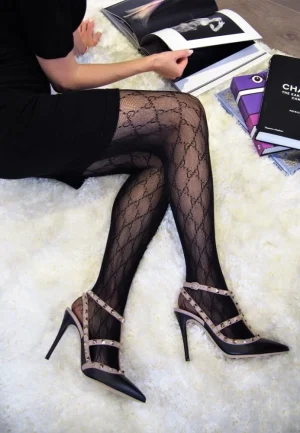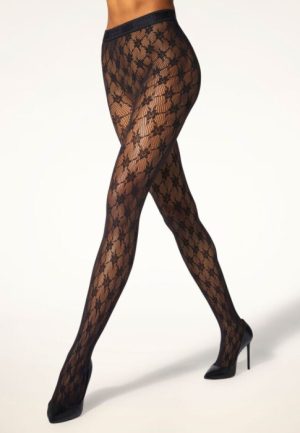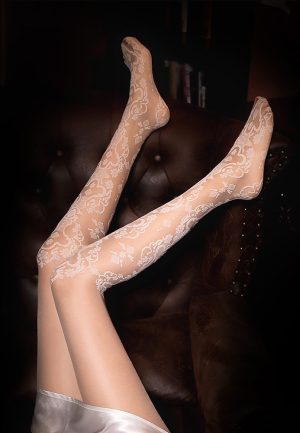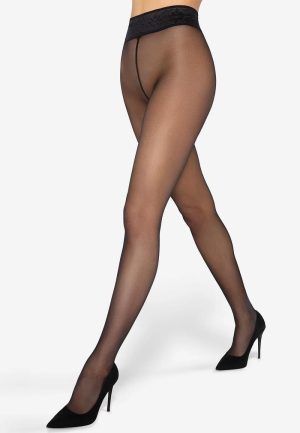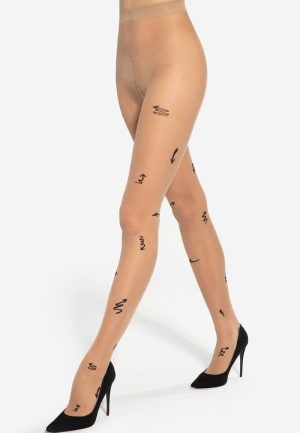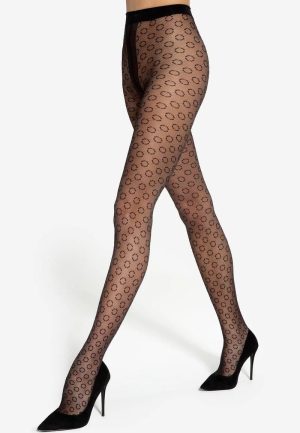Black tights are a cornerstone of countless wardrobes. Whether they’re sheer and delicate, opaque and cozy, or textured and statement-making, a good pair of black tights can elevate an outfit, provide warmth, and offer a boost of confidence. But, as anyone who’s ever worn them knows, black tights – particularly the sheerer varieties – can be notoriously fragile. A single snag, a tiny run, or even just the gradual fading and pilling that comes with wear can quickly render a favorite pair unwearable.
This comprehensive guide dives deep into the world of black tights care, offering practical advice, proven techniques, and insider tips to help you extend the life of your legwear, prevent those dreaded runs, and keep your black tights looking their absolute best for as long as possible. We’ll cover everything from choosing the right tights in the first place to washing, drying, storing, and even repairing minor damage.

Part 1: Choosing Wisely – The Foundation of Long-Lasting Tights
The longevity of your black tights starts before you even put them on. The choices you make when purchasing them significantly impact their durability and resistance to snags and runs. Here’s what to consider:
- Denier Matters: Denier refers to the weight and thickness of the yarn used to make the tights. Lower denier numbers (e.g., 10-20) indicate sheer, delicate tights, while higher denier numbers (e.g., 40+) signify thicker, more opaque, and generally more durable tights. For everyday wear, a denier of 40-60 often strikes a good balance between appearance and durability. For maximum resilience, opt for 70 denier or higher. Sheer tights (under 30 denier) will always be more prone to runs, but even within this category, quality varies.
- Material Matters More: While nylon is the most common material for tights, the quality of the nylon and the addition of other fibers can make a huge difference. Look for tights that incorporate Lycra (spandex) or elastane. These fibers provide stretch and recovery, making the tights less likely to sag, bag, or tear. Some higher-end tights even use reinforced yarns or specialized knitting techniques for added durability. Microfiber tights are often softer and more durable than standard nylon tights.
- Read the Reviews: Before purchasing a new brand or style of black tights, take the time to read online reviews. Pay attention to comments about durability, snag resistance, and how well the tights hold up after multiple washes. Customer reviews can provide invaluable insights that you won’t find on the packaging.
- Consider the Construction: Examine the tights closely (if possible) before buying. Look for features like a reinforced toe and panty, which are common points of stress and wear. A wider, comfortable waistband is also a good sign, as it’s less likely to dig in or roll down, which can put stress on the fabric. A cotton gusset is a plus for comfort and hygiene.
- Brand Reputation: While price isn’t always a guarantee of quality, established hosiery brands often have a reputation for producing more durable tights. They may invest in better materials, construction techniques, and quality control.
- Don’t Skimp on Sheers (Too Much): While it’s tempting to buy the cheapest sheer black tights, be aware that you often get what you pay for. Extremely inexpensive sheer tights are often made with lower-quality materials and are much more prone to runs. It’s often more cost-effective in the long run to invest in a slightly more expensive pair that will last longer.
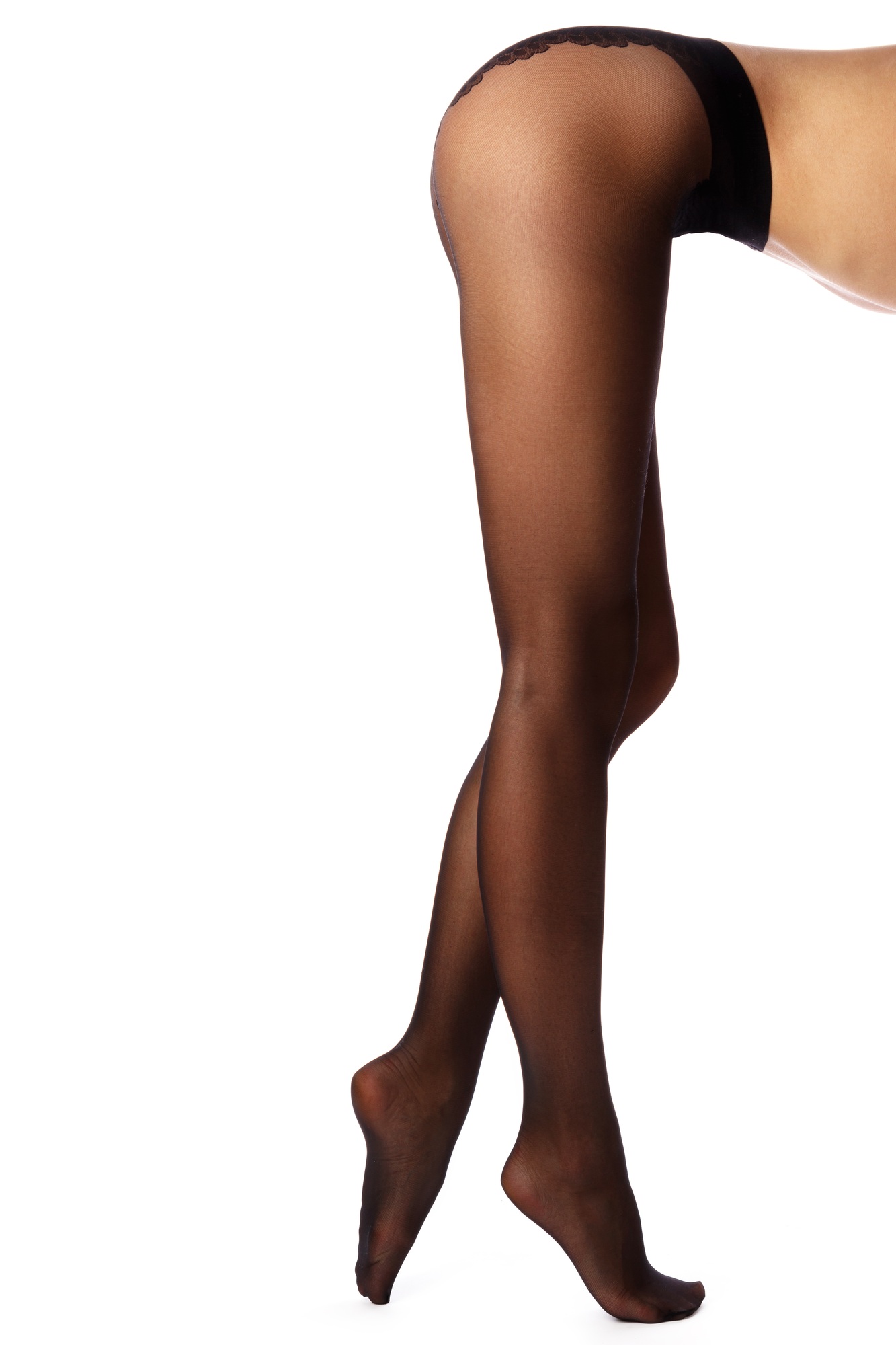
Part 2: The Art of Putting On (and Taking Off) Tights – Preventing Snags Before They Happen
The way you handle your tights, especially when putting them on and taking them off, is crucial in preventing snags and runs. Here’s a step-by-step guide to minimizing the risk:
- Prepare Your Hands and Feet: Before touching your tights, make sure your hands are clean and free of any rough skin, hangnails, or jewelry that could snag the fabric. Moisturize your hands and feet, especially if they are dry, as dry skin can catch on delicate tights. Consider wearing cotton gloves if you have particularly rough hands. File any sharp or jagged fingernails and toenails.
- Remove Jewelry: Rings, bracelets, and even watches can easily snag tights. Remove all jewelry from your hands and wrists before handling your tights.
- Sit Down: It’s much easier to put on tights carefully and evenly when you’re sitting down. This gives you more control and reduces the risk of overstretching or pulling the fabric.
- Gather, Don’t Pull: The key to putting on tights without snagging them is to gather the fabric, not pull it. Start by gathering one leg of the tights all the way down to the toe.
- Insert Your Foot Carefully: Point your toes and carefully insert your foot into the gathered toe section. Ensure your toenails don’t catch on the fabric.
- Slowly and Evenly Roll Up: Gradually roll the tights up your leg, smoothing out any wrinkles or bunching as you go. Avoid pulling or tugging on the fabric. Work your way up inch by inch, ensuring the tights are evenly distributed.
- Repeat for the Other Leg: Repeat the same process for the other leg.
- Adjust the Waistband: Once both legs are on, gently pull up the waistband to your desired position. Avoid yanking or pulling too hard.
- Taking Them Off: Reverse the process. Gently roll the tights down your legs, rather than pulling them off. Avoid bunching the fabric as you remove them.

Part 3: Washing Black Tights – The Gentle Approach
Proper washing is essential for maintaining the integrity and color of your black tights. Harsh detergents, hot water, and aggressive washing machines can all damage the delicate fibers, leading to fading, pilling, and stretching.
- Hand Washing is Best: Hand washing is the gentlest and most recommended method for cleaning black tights, especially sheer ones.
- Use Cold Water: Always use cold or lukewarm water. Hot water can damage the elastic fibers and cause the color to fade.
- Choose a Gentle Detergent: Use a mild detergent specifically designed for delicates or hosiery. Avoid detergents with bleach, harsh chemicals, or strong fragrances. Liquid detergent is preferable to powder, as it dissolves more easily and is less likely to leave residue.
- Turn Tights Inside Out: Turning your tights inside out before washing helps protect the outer surface from abrasion and fading.
- The Hand Washing Process:
- Fill a clean sink or basin with cold water.
- Add a small amount of gentle detergent and mix well.
- Submerge the tights in the soapy water.
- Gently swish the tights around in the water for a few minutes. Avoid rubbing or scrubbing the fabric.
- Let the tights soak for 5-10 minutes.
- Rinse thoroughly with cold water until all traces of detergent are gone.
- Machine Washing (With Caution): If you must machine wash your tights, use the gentlest cycle (delicates or hand wash cycle) and cold water. Always place the tights inside a mesh laundry bag to protect them from snagging on other garments or the washing machine drum. Use a mild detergent.
- Never Use Bleach: Bleach will severely damage the fibers of your tights and cause the color to fade dramatically.
Part 4: Drying Black Tights – Air is Your Friend
Heat is the enemy of delicate hosiery. Never put your black tights in the dryer, as the high heat can shrink them, damage the elastic, and cause fading.
- Air Drying is Essential: The best way to dry black tights is to air dry them.
- Gently Squeeze Out Excess Water: After washing, gently squeeze out excess water from the tights. Do not wring or twist them, as this can damage the fabric.
- Roll in a Towel (Optional): To speed up the drying process, you can lay the tights flat on a clean, dry towel and roll them up gently to absorb more moisture.
- Hang to Dry (Properly): Hang the tights to dry over a shower rod, drying rack, or a smooth, padded hanger. Avoid hanging them in direct sunlight, as this can cause fading. Make sure the tights are not bunched up or overlapping, as this can prevent them from drying evenly. You can also lay them flat to dry on a clean, dry towel.
Part 5: Storing Black Tights – Preventing Snags in the Drawer
Proper storage is just as important as proper washing and drying. Tossing your tights haphazardly into a drawer can lead to snags, wrinkles, and tangles.
- Fold or Roll, Don’t Ball: Avoid balling up your tights, as this can create wrinkles and put stress on the fabric. Instead, fold them neatly or roll them up.
- Individual Compartments: The best way to store tights is to give each pair its own compartment. This prevents them from snagging on each other or other items in your drawer. You can use drawer dividers, small fabric pouches, or even zip-lock bags.
- Keep Away from Sharp Objects: Store your tights away from anything that could snag them, such as jewelry, zippers, or Velcro.
- Consider Acid-Free Tissue Paper (For Long-Term Storage): If you’re storing tights for an extended period (e.g., seasonal storage), consider wrapping them in acid-free tissue paper to protect them from dust and discoloration.

Part 6: Repairing Minor Damage – Salvaging Your Tights
Even with the best care, snags and small runs can sometimes happen. But don’t despair! There are ways to repair minor damage and extend the life of your tights.
- Clear Nail Polish (The Classic Fix): For small runs or snags, the classic trick is to apply a tiny dab of clear nail polish to the edges of the run. This helps prevent the run from getting larger. Be sure to let the nail polish dry completely before wearing the tights. This works best on sheer tights.
- Hairspray (A Temporary Solution): Hairspray can also be used to temporarily stop a run from spreading. Spray a small amount of hairspray directly onto the run. This is a less permanent fix than nail polish.
- Tights Repair Kits: Some companies sell specialized tights repair kits that include tiny hooks or adhesives designed to mend small holes and runs.
- Sewing (For Larger Runs): For larger runs, you can try to carefully sew the edges of the run together using a very fine needle and thread that matches the color of your tights. This requires a steady hand and some sewing skill.
- Knowing When to Let Go: While it’s admirable to try to repair your tights, there comes a point when it’s simply not worth it. If a run is very large, or if the tights have multiple runs or holes, it’s probably time to retire them.

Part 7: Additional Tips and Tricks
- Carry a Spare Pair: If you’re wearing sheer tights to an important event, it’s always a good idea to carry a spare pair in your bag, just in case of a snag or run.
- Moisturize Regularly: Keeping your skin moisturized, especially your legs, will help prevent dry skin from snagging on your tights.
- Be Mindful of Your Surroundings: Be aware of your surroundings when wearing tights, especially sheer ones. Avoid brushing up against rough surfaces or sharp objects.
- Pre-Wash New Tights: Some people recommend washing new tights before wearing them for the first time. This can help remove any excess dye or manufacturing residues and may make them slightly less prone to runs.
- Freezer Trick (Debatable): There’s a long-standing rumour that putting your tights in the freezer makes them stronger. The scientific evidence for this is weak, and it’s unlikely to make a significant difference. If you want to try it, place the damp tights in a plastic bag and freeze them overnight. Thaw completley before wearing. The theory is the cold tightens the fibres.
By following these guidelines, you can significantly extend the life of your black tights, keep them looking their best, and avoid the frustration of snags and runs. Investing a little time and effort in proper care will save you money in the long run and ensure that your favorite legwear remains a staple in your wardrobe for years to come. Remember that gentle handling, proper washing and drying, and careful storage are the keys to keeping your black tights in top condition.

